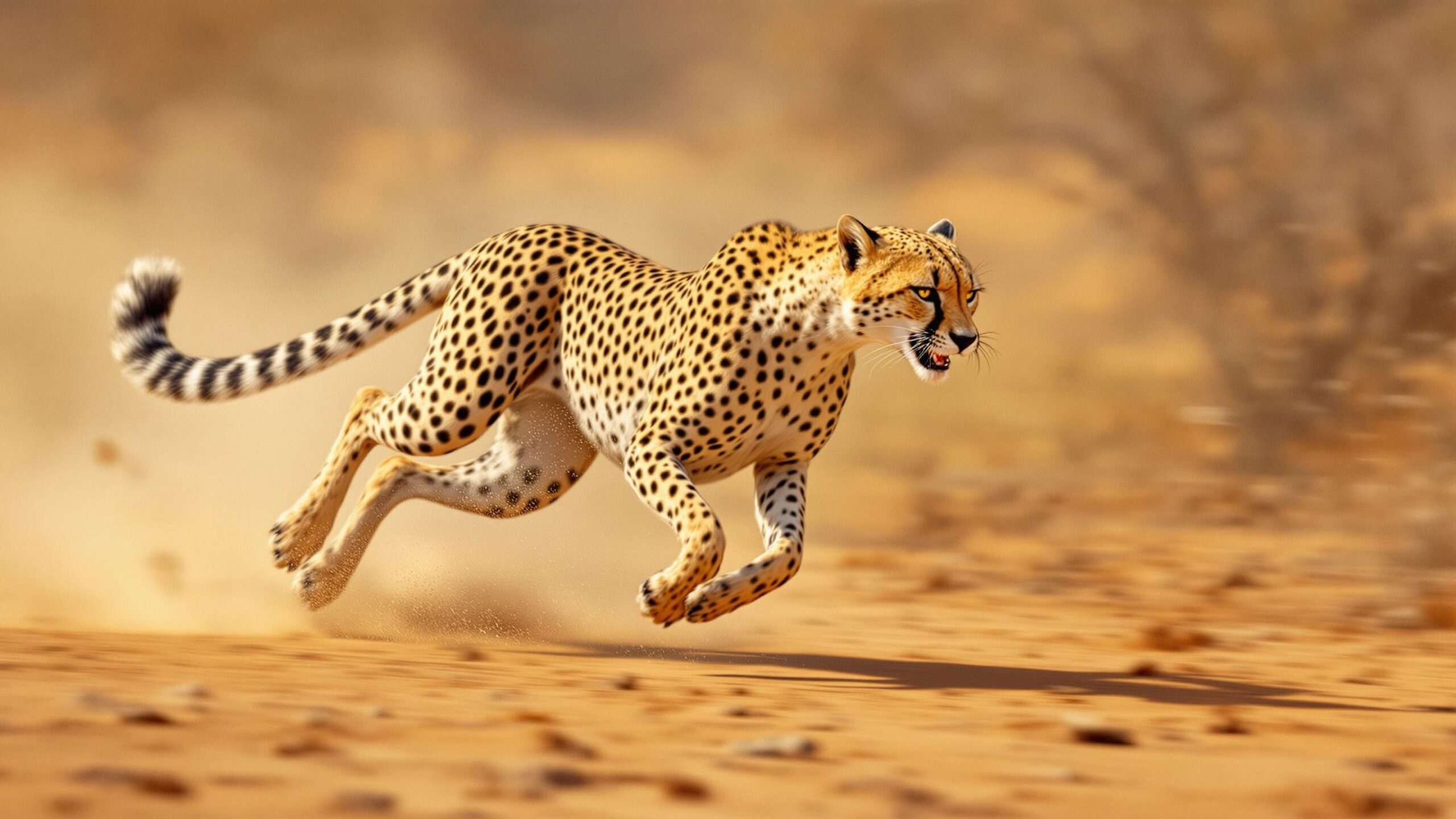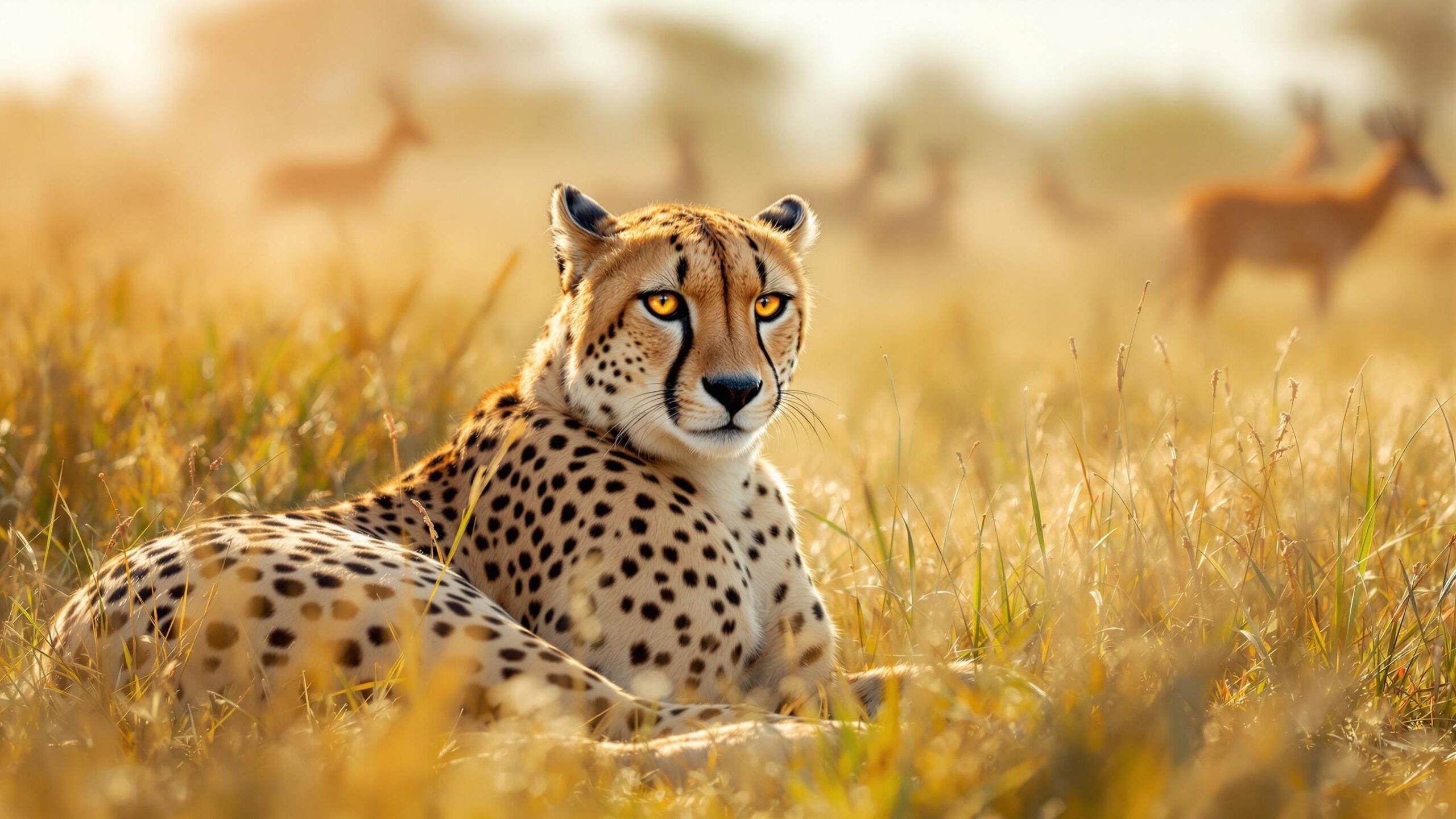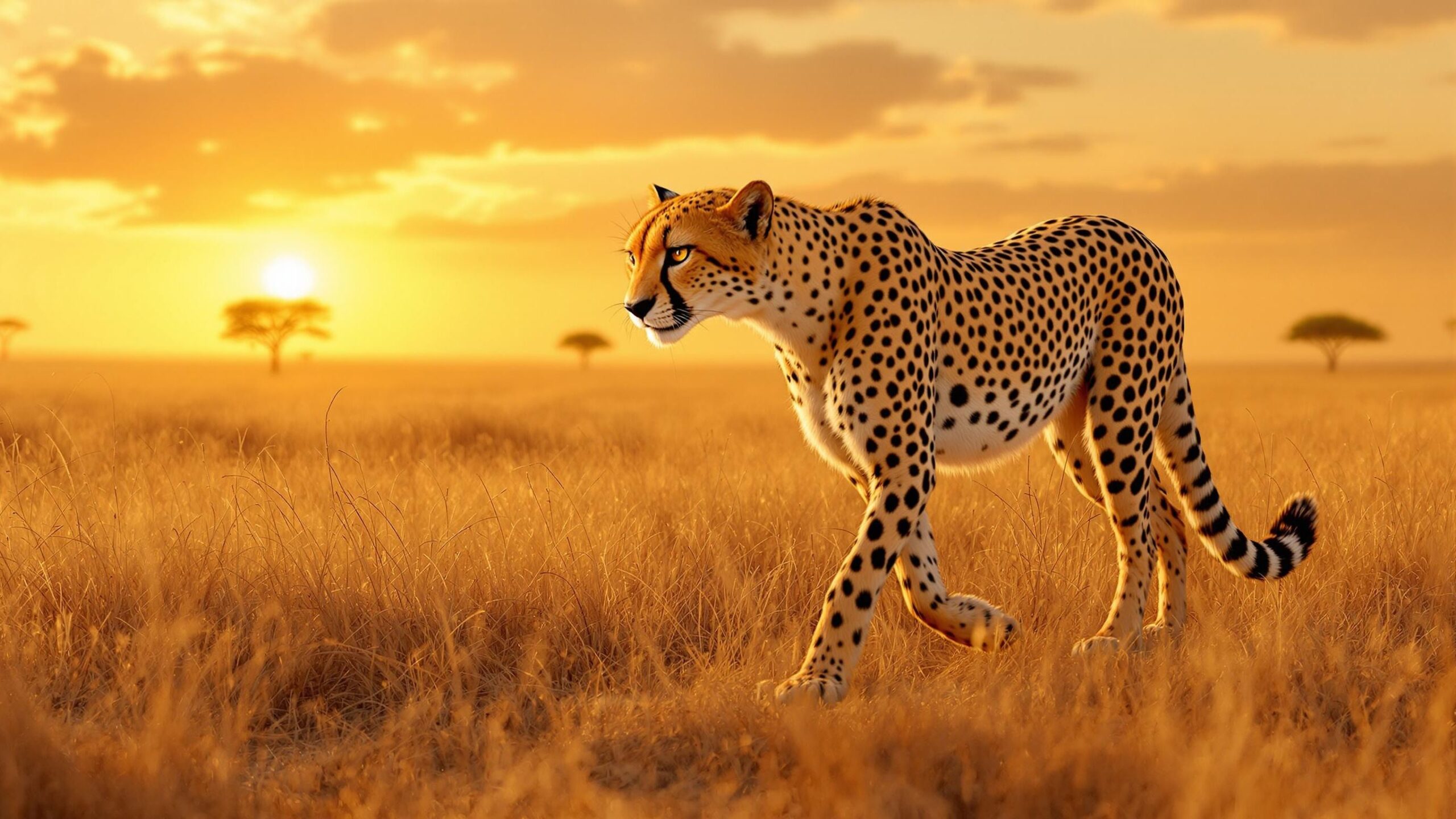The Central African Cheetah: The Silent Speedster of the Sahel
Among the vast open plains, acacia-studded savannas, and sunbaked scrublands of central Africa, a rare and elusive predator streaks through the brush like a wisp of smoke. Known scientifically as Acinonyx jubatus soemmeringii, the Central African cheetah is one of the least understood members of the cheetah family—silent, swift, and slipping through some of the world’s most challenging landscapes. While cheetahs as a species are often celebrated for their unmatched speed and sleek appearance, this subspecies offers a unique glimpse into survival under pressure, regional adaptation, and the delicate dance between predator and environment.
The Central African cheetah doesn’t roar for attention. Instead, it prowls under the radar, largely absent from the spotlight that shines on the more famous southern and eastern populations. Yet its story is every bit as dramatic, its importance every bit as vital, and its future increasingly uncertain.
A Subspecies Defined by Place and Adaptation
Acinonyx jubatus soemmeringii is a subspecies that historically spanned a large portion of the Sahel and central African regions, including parts of Chad, the Central African Republic, South Sudan, Cameroon, and even into the fringes of Niger and Nigeria. Though it shares its scientific designation with the Northeast African cheetah, genetic and ecological data suggest that Central African populations are regionally distinct—shaped by different climates, prey availability, and human pressures.
Physically, Central African cheetahs exhibit the trademark elegance of their kind. Long, powerful legs, a slender torso, and a deep chest define their speed-focused physiology. Their coats tend to be a bit lighter than those of East African cheetahs, and their spots are often more widely spaced. A faint ruff along the neck and shoulders may be present in some individuals, possibly as a defense against the cooler nights and harsher winds of the Sahelian environment. These cats are not merely runners—they are survivors. In a region marked by political instability, ecological variability, and frequent droughts, the Central African cheetah has managed to cling to survival through sheer adaptability and quiet resilience.
The Terrain of the Tactician
Unlike the iconic grasslands of the Serengeti, the central African landscapes where these cheetahs roam are more diverse and rugged. Open savanna gives way to dry forest, which blends into thorny shrubland and semi-arid plains. In places like Zakouma National Park in Chad or the Manovo-Gounda St. Floris National Park in the Central African Republic, the cheetah navigates a patchwork of terrain that requires more than just speed—it requires strategy.
The environment is not always kind. Seasonal rains can transform dusty plains into boggy flood zones, while dry spells push prey into tighter ranges, increasing competition with other predators and humans. Cheetahs often have to cross long distances in search of viable hunting grounds. In some areas, prey populations are seasonal, forcing cheetahs to synchronize their movements with antelope migrations or rainfall patterns.
Despite these challenges, the Central African cheetah has maintained a foothold in key ecosystems. Their preferred prey includes small to medium-sized ungulates like kob, reedbuck, and various gazelles. Unlike lions or leopards, which often rely on brute strength or stealth ambushes, cheetahs operate on a razor’s edge of precision and timing. They stalk until they are within 50 to 100 feet of their target, then launch into a lightning-fast chase, reaching speeds that can exceed 60 mph.
Life in Motion
Cheetahs live a nomadic existence. Unlike lions, they do not maintain permanent territories. Instead, they cover vast areas—sometimes hundreds of square miles—depending on prey availability, water access, and competition. Males may form coalitions, usually with brothers or other males from the same litter, working together to defend key areas. Females, more solitary by nature, roam even wider ranges, particularly when raising cubs.
Cubs are born after a gestation period of roughly three months. A typical litter contains three to five cubs, born blind and completely dependent on their mother. In the wild, cub mortality is high, especially in regions like central Africa where hyenas, leopards, jackals, and even large birds of prey pose significant threats. Mothers move dens frequently, using concealment and instinct to give their offspring the best chance of survival. As they grow, cubs are gradually introduced to the art of hunting. They chase insects, pounce on siblings, and practice stalking through grass. By six to eight months of age, they begin to accompany their mother on hunts. Over the next year, they refine their skills, learning not just how to catch prey, but when to run, how to approach, and what dangers to avoid.

Shadows of Human Impact
While cheetahs have evolved to deal with natural hazards, human activity presents a different and far more complex threat. Across central Africa, habitat loss is accelerating due to agriculture, infrastructure development, and the expansion of pastoral communities. Roads cut through migration paths. Settlements push deeper into wild areas. Livestock graze in former prey zones.
Perhaps more than any other large carnivore, cheetahs are vulnerable to human presence. Their hunting success depends on visibility, quiet, and low disturbance. They do not adapt well to fragmented or heavily populated areas. When wild prey disappears, cheetahs sometimes turn to livestock, which invites retaliation from herders. Though cheetahs rarely pose a danger to humans, they are often perceived as pests and persecuted accordingly. Poaching, while less of a direct threat to cheetahs than it is to elephants or rhinos, can still impact populations indirectly. Traps set for other animals can injure or kill cheetahs. Meanwhile, the illegal pet trade—especially through trans-Sahelian smuggling routes—continues to claim cubs each year. These animals rarely survive captivity, and their removal from the wild strips valuable genetic diversity from already fragile populations.
A Role in the Balance
In the ecology of central Africa, cheetahs play a subtle but vital role. As mid-level apex predators, they help control populations of herbivores, prevent overgrazing, and contribute to the overall balance of predator-prey dynamics. They tend to focus on the weak or slower individuals, providing a natural culling mechanism that keeps prey populations healthy and robust.
More than that, the cheetah serves as an indicator species. Their presence signifies functioning ecosystems—open landscapes, intact prey chains, and relative stability. Where cheetahs vanish, it often means deeper problems are unfolding: overexploitation, habitat collapse, or unchecked conflict between humans and nature. By protecting the cheetah, conservationists are often protecting a much wider web of life. This includes less visible species that depend on the same landscapes—birds, reptiles, insects, and even plants that benefit from ungulate grazing patterns and predator-prey interactions.
Conservation on the Ground
Conservation efforts in central Africa face daunting challenges, but there are promising initiatives underway. Protected areas like Zakouma National Park have made headlines for their successful recovery of wildlife populations, improved ranger training, and community outreach programs. In some regions, NGOs are partnering with local governments to conduct population surveys, build wildlife corridors, and engage local communities in coexistence strategies.
Radio collaring, camera trap surveys, and genetic sampling are helping fill in the data gaps about where cheetahs live and how they move. This information is crucial for informed decision-making—whether it’s about where to build infrastructure, how to manage grazing, or where to focus anti-poaching patrols. Educational outreach is another key component. Many communities that share landscapes with cheetahs have limited access to conservation information. When local people understand the ecological and economic benefits of cheetahs—especially through tourism or biodiversity programs—they are more likely to become allies in protection efforts.
A Legacy Worth Protecting
The Central African cheetah is not just a subspecies—it is a legacy. It represents a branch of evolutionary brilliance that has persisted through ice ages, droughts, and human expansion. Its streamlined body and high-speed anatomy are reminders of nature’s creative power. Its vulnerability is a reflection of our modern world.
Preserving the Central African cheetah means preserving a piece of the planet’s most unique heritage. It means honoring the open plains of Chad, the shadowed forests of the Central African Republic, the floodplains of South Sudan—not as expendable resources, but as living, breathing ecosystems that deserve care. There is still time. With continued focus, cross-border collaboration, and public awareness, the cheetah of central Africa can remain a living presence on the continent—not just a memory or a museum exhibit.

The Cheetah in Culture
Though less featured in media than other cheetah populations, the Central African cheetah does appear in regional folklore. In some tribal traditions, it is seen as a symbol of patience and timing—traits that reflect the cheetah’s hunting strategy. In other stories, the cheetah is a messenger of the gods, a creature that moves between the visible and invisible worlds.
In modern times, the cheetah has also become a quiet symbol of hope for conservationists working in fragile regions. Its survival demonstrates that even amid hardship, wild beauty can endure. Its image, though elusive in the wild, is powerful in the human imagination—a reminder that the wild still matters, even in places the world rarely sees.
Looking to the Horizon
As we look to the future, the fate of the Central African cheetah hangs in delicate balance. The threats are real, but so are the opportunities. New technology is allowing better tracking. Local involvement is growing. Global attention, though still limited, is beginning to shift toward lesser-known species and regions. The cheetah itself, meanwhile, continues its timeless routine—prowling through grass at dawn, scanning the horizon, and sprinting into action when the moment is right. It needs space. It needs quiet. It needs prey. But most of all, it needs time.
Time for policies to take root. Time for education to change perspectives. Time for nature to heal. Because when the dust clears and the sun rises over central Africa, the land still waits for the streak of spotted gold to flash once more across the plains. The Central African cheetah may not ask for much—but what it gives in return is irreplaceable.
More Articles

Top 10 Deadliest Animals to Humans
write an exciting excerpt for this. maximum of 65 words.
ChatGPT said:
Think lions are the deadliest? Think again. From tiny mosquitoes to ghostly jellyfish and stealthy crocs, these creatures are nature’s silent killers. Explore the top 10 deadliest animals to humans and uncover the shocking ways they strike.

Top 10 Most Popular Animals in the World
From the mighty lion to the playful panda, these wild animals have captured hearts and imaginations across the globe. Dive into incredible stories, fascinating facts, and unexpected quirks that make these top 10 creatures the most beloved on Earth.

Top 10 Most Intelligent Animals on Earth
Think humans have a monopoly on brains? Think again. From tool-wielding chimps to puzzle-solving octopuses, these wild animals are rewriting what it means to be smart.

Top 10 Cutest Animals That Melt Hearts
Get ready to say “aww” as we explore the top 10 cutest wild animals on Earth! From red pandas to quokkas, these irresistible creatures charm their way into our hearts with every blink, bounce, and squeak.

